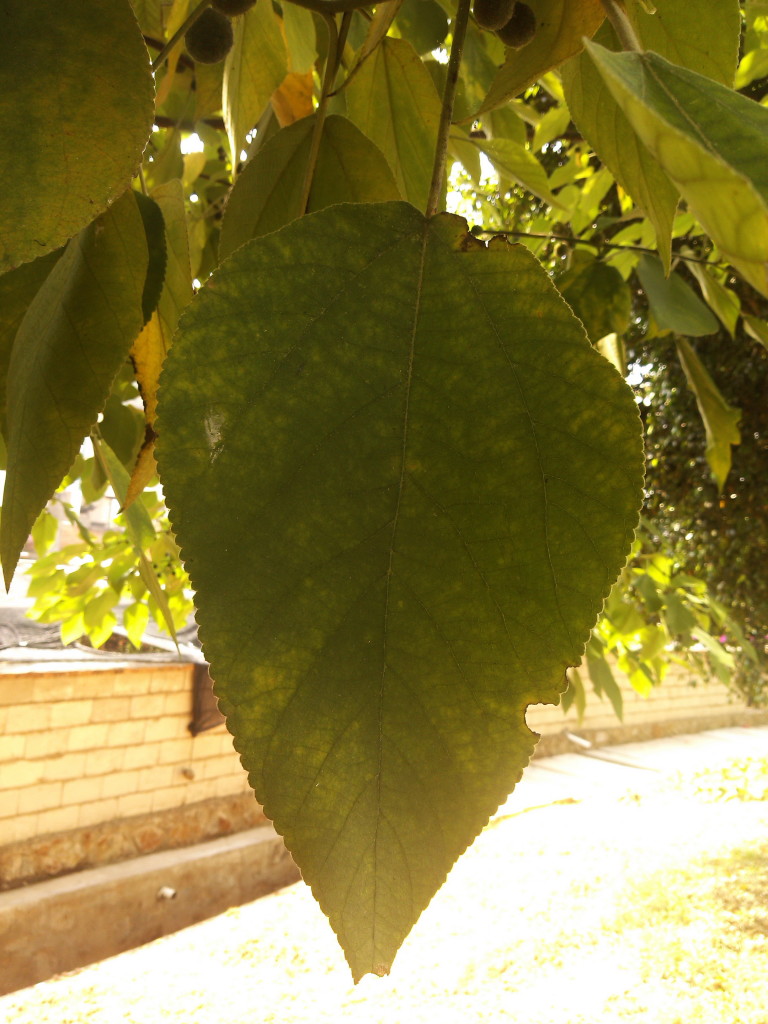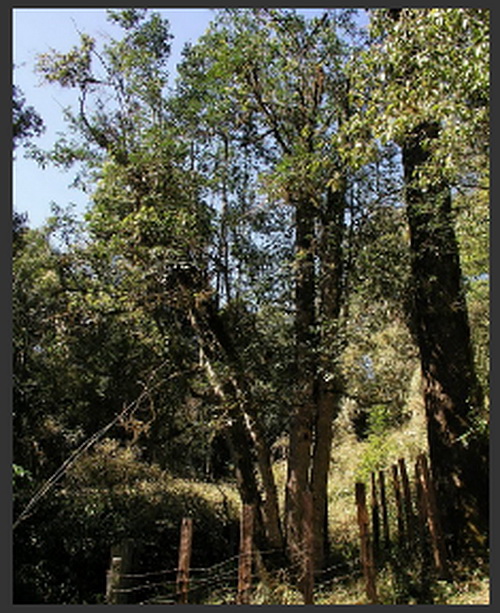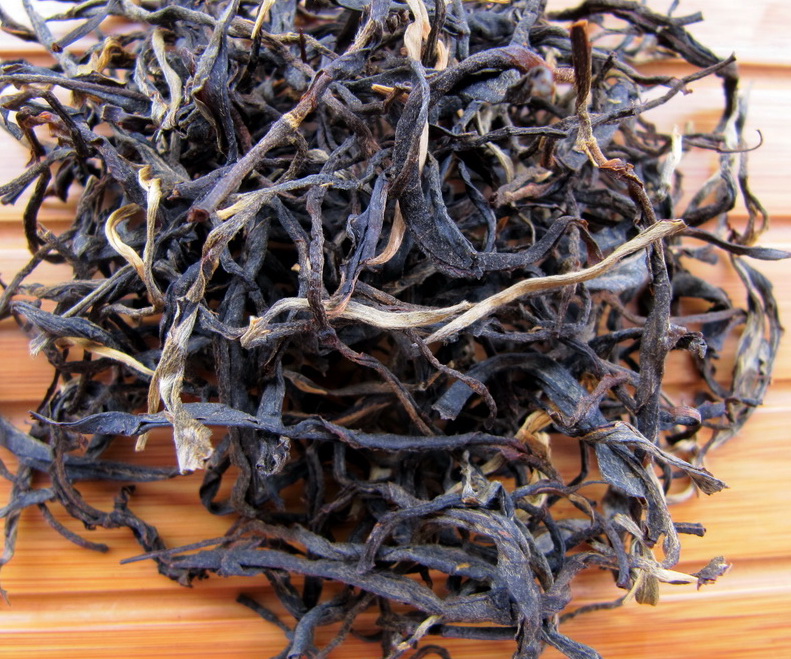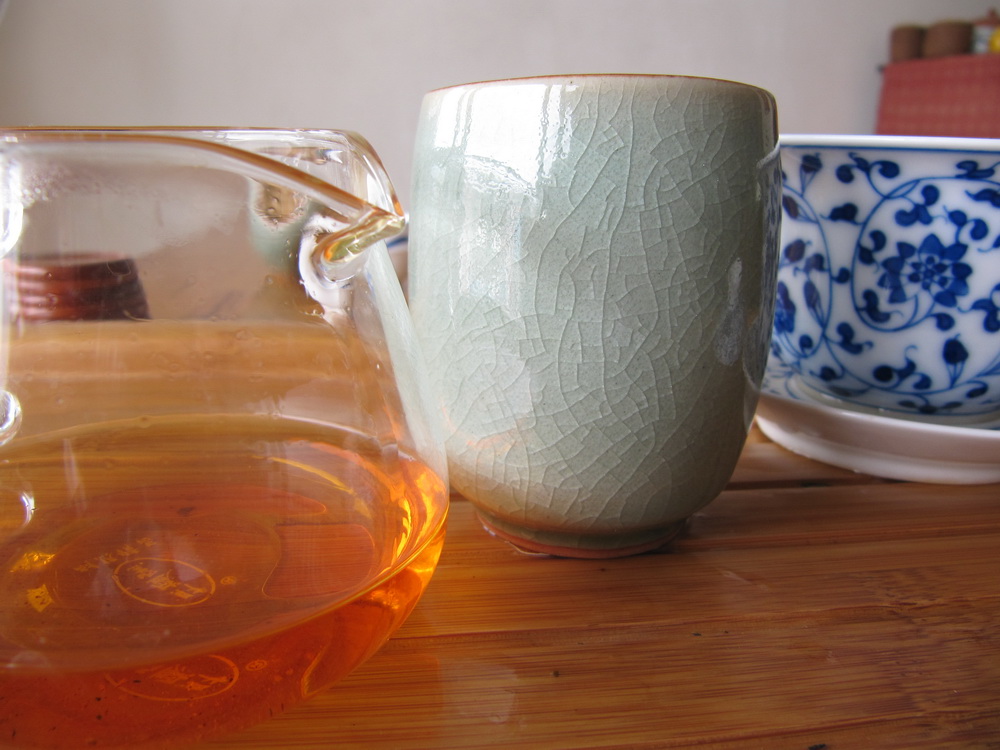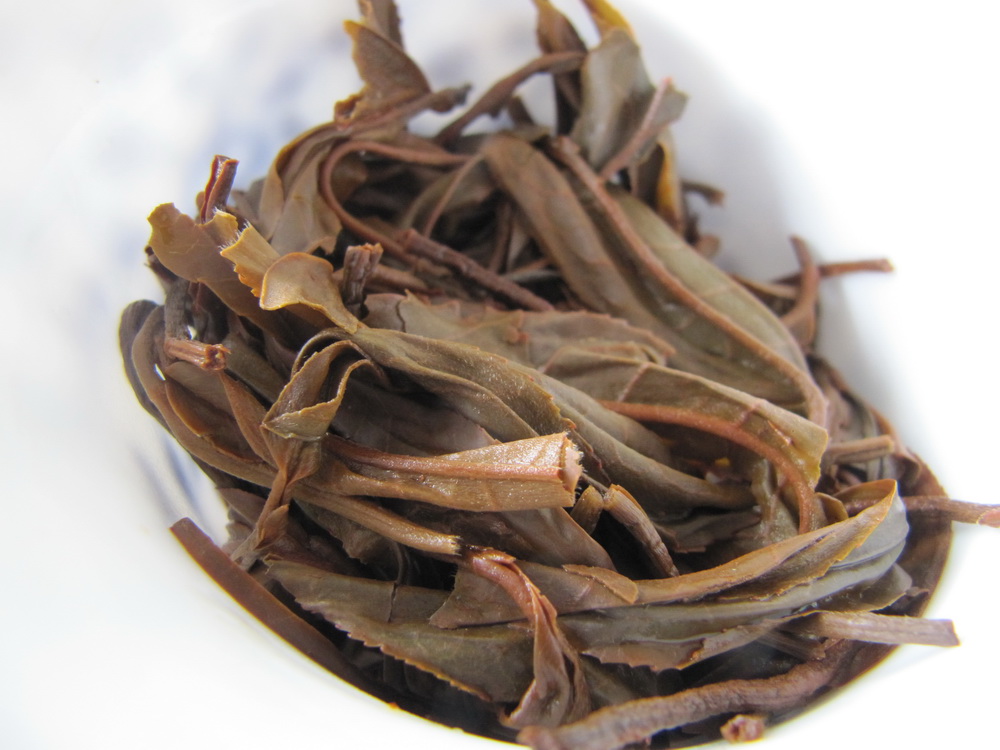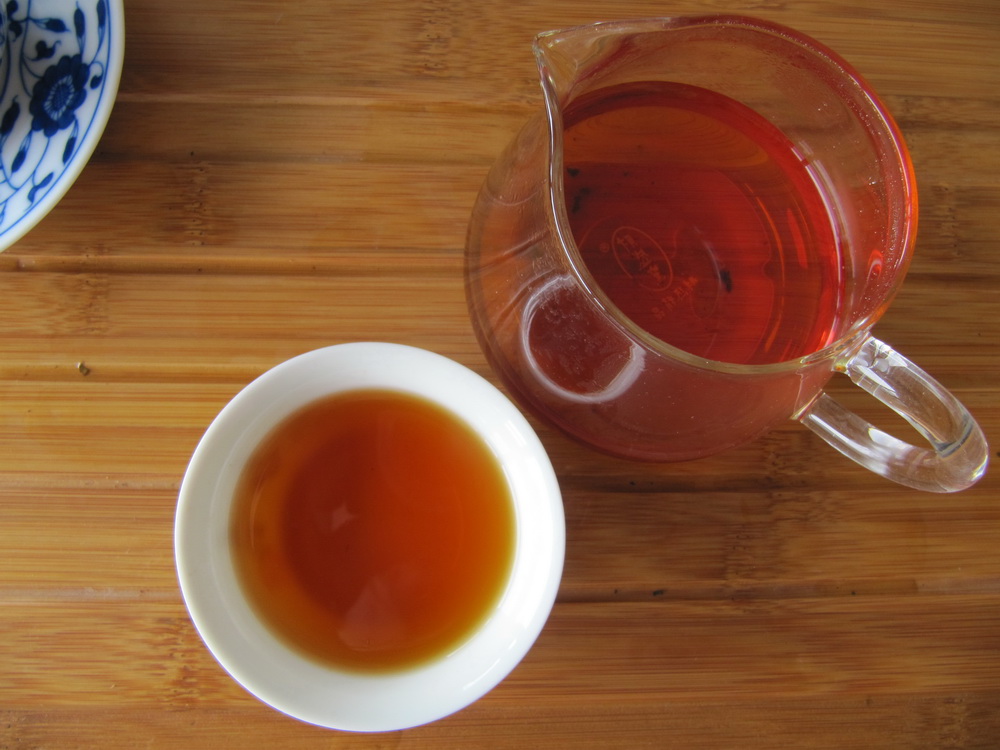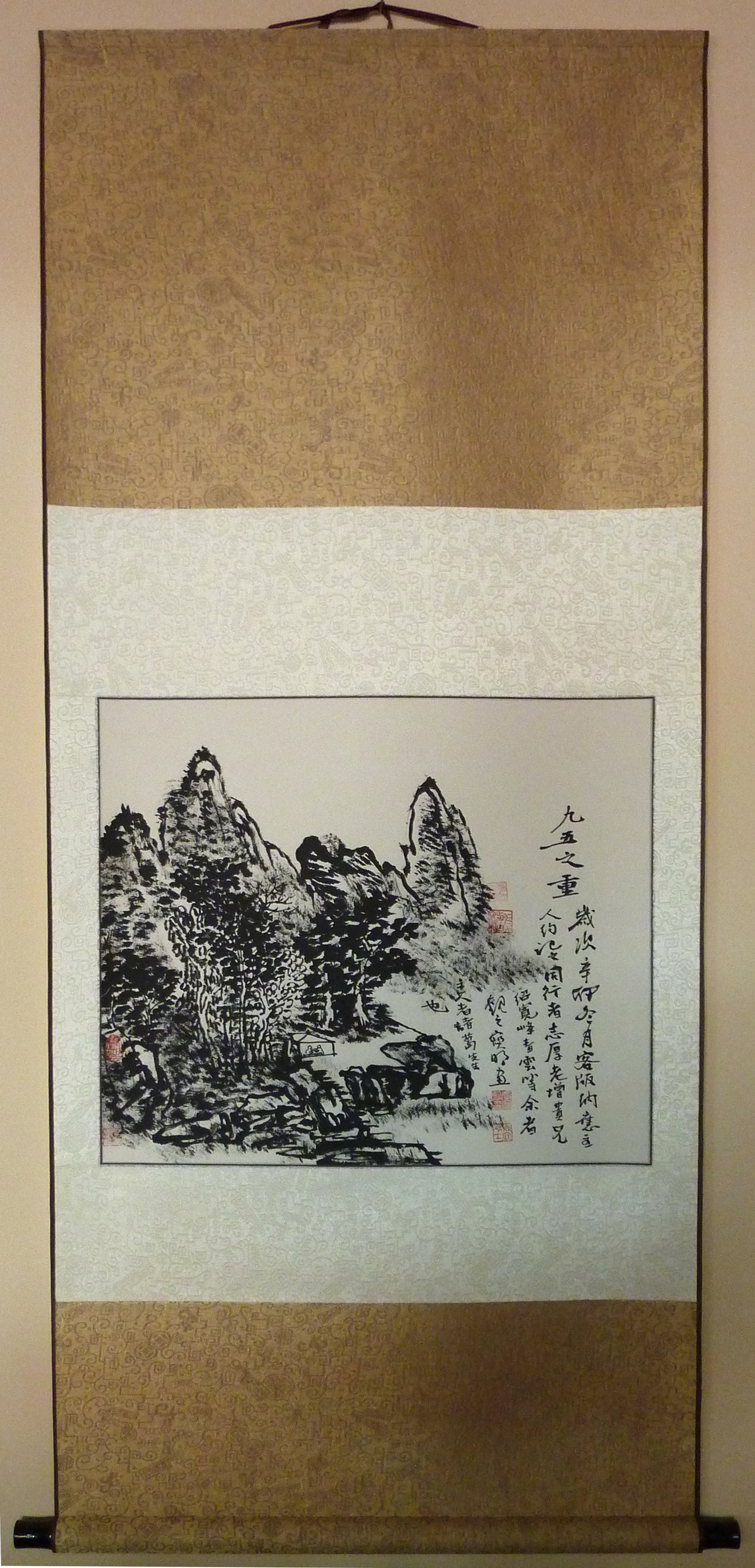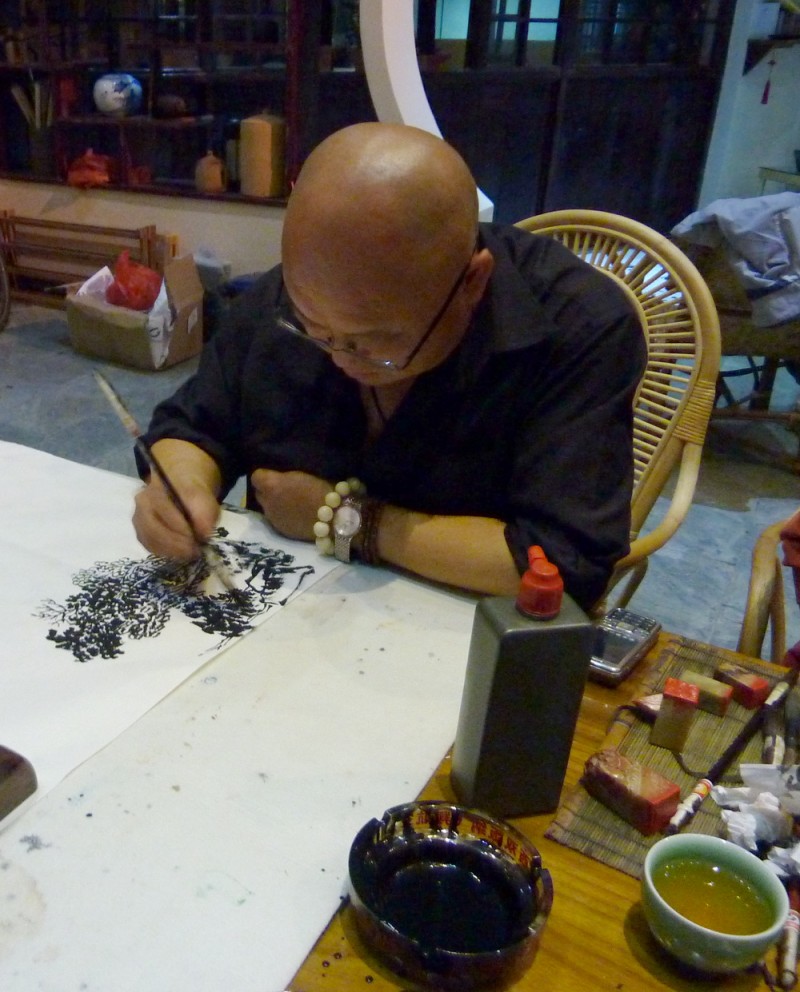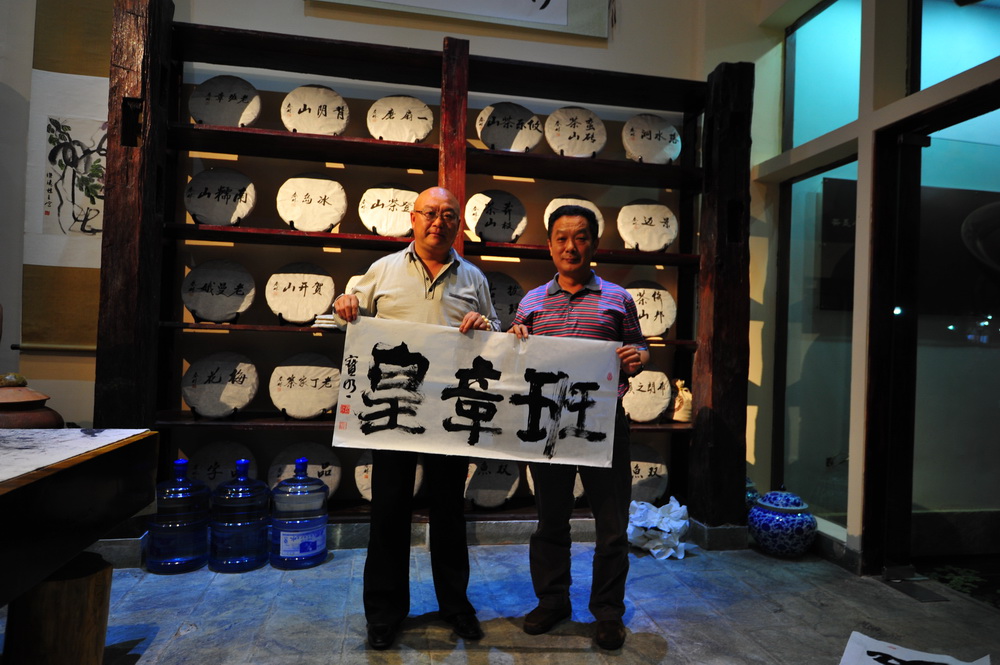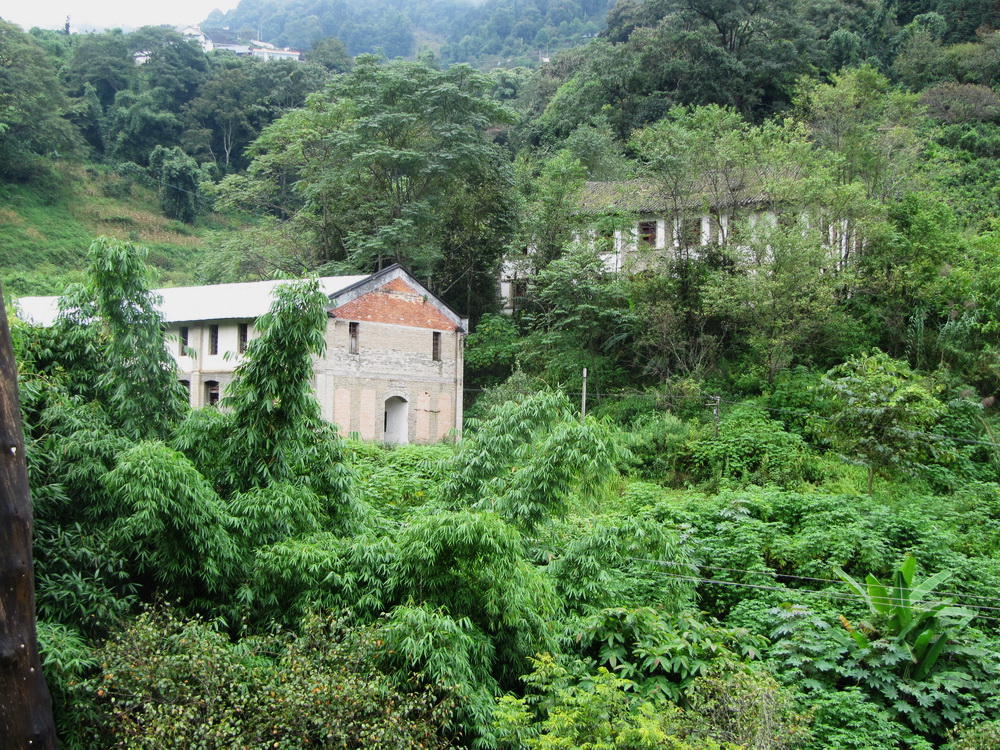
Nan Nuo Shan Cha Chang. The building on the right was one of the earlier to be built. The building lower down came later.
Hui People have a long history in Yunnan; associated with trade (hence tea), government and rebellion. From as early as the 8th century they dominated the trade routes throughout Yunnan and beyond.
During the Yuan and Ming Dynasties (1280-1644) they settled widely throughout the province, some moving into positions of power, but by the 19th Century (Qing Dynasty), conflict with Han Chinese saw many move into Burma (Myanmar). Under Du Wen Xiu – they established a Caliphate in Dali, only to be overthrown by the Han some years later. Important Hui settlements were established further south, particularly around Tong Hai and Jian Shui. In Xishuangbanna, Menghai had an early sizeable Hui population.
Bai Liang Cheng, know locally as Meng Yu was one such Yunnanese Hui man. He was born in 1893, attended a private school and, subsequently Yunnan School of Politics and Law.
By his late 30’s, Bai Meng Yu had been asked to become the head of the provincial government (under then Nationalist Government of Chiang Kai Shek), a post he declined, having no interest in politics. He was then appointed to work at Mo Hei Salt Works as an insurance officer, where he worked for two years or so.
In 1932 he was transferred to Puer Department of Taxation. In the course of work he travelled extensively throughout the region, visiting Fuhai (now Meng hai) Mengzhe, etc.
His interest in the area grew and he became intent on seeing the region develop economically. It was allegedly on these trips that he had the idea of setting up a tea factory: an idea he is said to have mooted to Liu Chong Ren, the then head of Yunnan Department of Finance, who had considerable faith in Bai, and endorsed the plan.
On the basis of this he travelled extensively throughout China to understand more about the tea market. Central to his plan was the idea of creating a modern, highly mechanised factory and, to this end he also visited Japan to learn about tea making.
On his return, he proposed his plan to the provincial government but, according to details from the time, the initial response was that the government ‘..would solely rely on taxes for revenue and not “eat the food off the beards of ordinary people”, and only in this way would a healthy, diversified economy develop.’
By the end of 1937 however, Liu had given his agreement to the establishment in Nan Qiao, Mengzhe of an experimental tea factory. It was to be called Yunnan Si Pu District Experimental Tea Factory. Bai Meng Yu was to be in charge.
In early 1938 the first stage was completed. Subsequently Bai was responsible for the planting of more than 100 mu of tea gardens in Nan Qiao.
Nan Nuo Shan, not far from Fuhai, where there were already extensive tea gardens was the site of the second phase. In April of that year the second factory was completed at Shi Tou Zhai in Nan Nuo Shan. Said by some to have been the most modern tea factory of it’s time, it was fitted with equipment from England that arrived 6 months later having been hauled by bullock cart from Rangoon in Burma (Myanmar) up to Kyaintong in Shan State and from there across the border to Daluo and on to Menghai (another version of the story says that Bai Meng Yu had visted India in his prepaparations for the factory and that the equipment was shipped from there). Ovens, cutting machines, rolling machines, a generator. All that was needed to set up a modern tea factory were installed in the factory that covered an area of 500 square metres.
The factory at that stage had 17 rooms including cutting, drying, rolling and sorting rooms. By the end of 1938 the factory was ready. It was called Yunnan Si Pu Enterprise Bureau Nan Nuo Shan Experimental Tea Factory. Having previously surveyed the market, Bai Meng Yu had already set his expectations high – the factory was to produce high quality black and green tea.
By March 1939 Nan Nuo Shan tea Factory had already produced it’s first black and green tea.
Another man, Fan He Jun was not far behind him. He was setting up another factory in Fuhai (present day Menghai) to be called Fuhai Tea Factory. This was to later become the now ubiquitous Menghai Tea Factory but Bai Meng Yu was a good 6 months ahead of them.
At the same time in Lincang, Feng Qing Tea Factory was being developed and there is some debate about which factory was the first to start production and claim the accolade of pioneering Yunnan Dian Hong.*
In the same year, the government introduced measures to control tea exports, which is said to have given the Nan Nuo Shan factory some trouble, but Bai Meng Yu approached Fan at Fuhai Tea Factory and the two co-operated for a time to produce Dian Hong.
One of the main activities of the factory at this stage was to distribute funds to farmers for an extensive planting programme. The approach was to use high quality, domestic stock for planting tea bushes following modern scientific methods. Bai oversaw the planting in Nan Nuo Shan of over 100 thousand mu (6,000 hectares)** of tea bushes.
In 1941 the factory went into production, attracting a lot of interest from other in the industry. That year they made 2000 dan of tea (a dan is a pole and two baskets that is traditionally used throughout Asia to carry goods, but here refers to a unit of weight – 50kg. i.e. 100 tonnes in total).
In order to move further into the export market, the factory concentrated on black tea, and Bai Meng Yu recruited the help of a number of famous tea masters from Shanghai and Hangzhou. The factory made black tea of excellent quality following stringent guidelines: (allegedly) only when there was dew could the farmers pick tea, they had to keep the leaves in the shade, ba jiao (a variety of small banana whose leaves are used traditionally for wrapping food) leaves were used to line the baskets and farmers were prevented from overfilling or stuffing the baskets.
At this stage, they were relying on the old tea tree gardens on Nan Nuo Shan for their supply source and there was a high demand that they were apparently unable to meet. At this time, black tea was Yunnan’s single biggest export.
By the early ’40’s, business was badly disrupted by the war in South East Asia. The Japanese army was in Burma and the route to SE Asia had been bombed and was closed. Production at Nan Nuo Shan stopped.
In November 1942 the Japanese army were near Daluo (in Menghai County). Fuhai Tea Factory moved all it’s technical personnel to Chongqing, but Bai stayed in Xishuangbanna. The workers who had stayed at the Nan Nuo Shan Factory formed a civil defense force and fought alongside the Guo Min Dang (KMT) 93rd Army to push the Japanese out of Daluo.
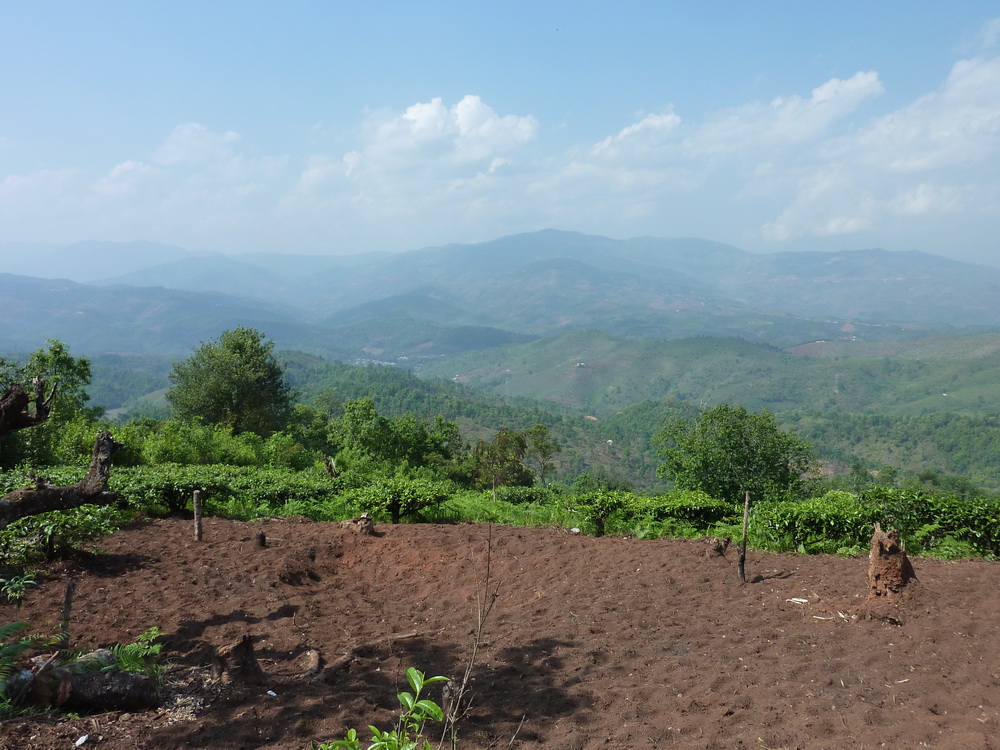
In the foreground is the site of the second Nan Nuo Shan Tea Factory. All that is left are a few bricks.
After the end of the war in 1946 Nan Nuo Shan quickly went back into production and took over some Fuhai resources as they had not yet returned to the factory. For the next two years they made tea non-stop. Bai Meng Yu also set about building a second facility near Xiang Yang Zhai. Planting and research on different varieties of tea tree also continued. Bai’s eldest son, Bai Bing Cong, who had just graduated from Fudan University joined his father in Nan Nuo Shan.
By the end of 1948, the political landscape was shifting: The upper echelons of Yunnan Government were in a state of conflict. The former head of finance, Liu Chong Ren, had already left for Hong Kong and Si Pu Enterprise Bureau was without anyone in charge.
Bai had been in Nan Nuo Shan for 10 years and was reluctant to leave, but the situation was disintegrating rapidly. He decided to go to Burma and stay near the border, apparently hoping for an improvement in the situation that would allow him to return but, following the exhortations of people in Nan Qiao, Bai Meng Yu, along with a much larger exodus which later would include many retreating KMT soldiers, moved to Burma and then eventually northern Thailand where there had for centuries been a sizeable Hui population. He lived in Chiang Mai (and then Mei Sai) till his death in August 1965.
Little seems to be known about his later years, and the man who played a key role in the creation of Yunnan ‘Dian Hong’ Black tea, and also in creating an, albeit embryonic, modern tea industry in the province, has become little more than a footnote to Yunnan’s ancient, but ever evolving tea history.
Subsequently, the equipment from Nan Nuo Shan was taken over by Fuhai, and the tea gardens near ‘Er Chang’ (No 2 Factory) were put in the hands of Yunnan Tea Research Institute, though in practice the gardens are left to local people to pick.
Little is left. The people are all gone except for one elderly Hui man who worked at the factory as a youngster, married a local Aini woman and remained.
The Shi Tou Zhai factory is dilapidated, with apparently no interest in preserving it. The second factory – a more modest set of workshops – has been raised, and all that is left are a few bricks. What does remain there however, on this picturesque low hill in the shadow of Nan Nuo Shan, is a sizeable, now 70 year old tea garden. A legacy of Bai Meng Yu.
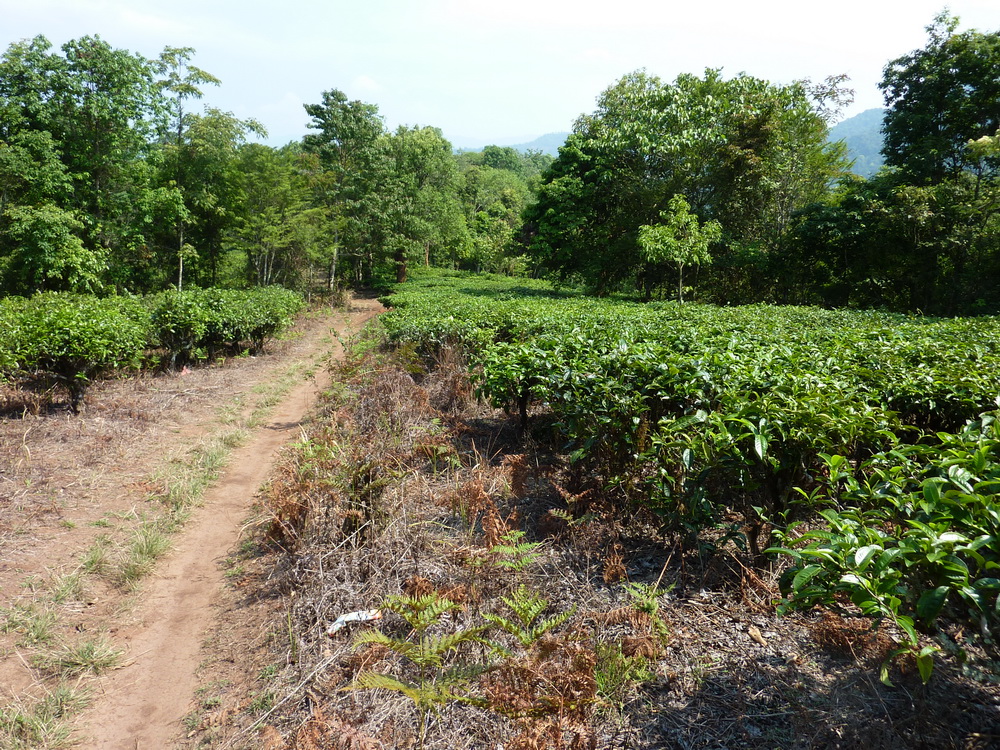
Looking back down the hill. The tea gardens that were planted by Bai Meng Yu and Nan Nuo Shan Tea Factory are on both sides.
*Dian is the old name for Yunnan. Hong means red. Chinese people refer to Black tea as Red tea
**This figure is rather improbable given that Nan Nuo Shan now is said to have a total of 20,000 mu of tea gardens and the whole of Nan Nuo Shan covers maybe 100 square kilometers.
See here for a subsequent posts:
Nan Nuo Shan Tea Factory Revisited
Nan Nuo Shan Cha Chang (a sequel of sorts)

